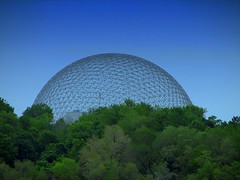| 9645278502 | Ecology | The branch of biology that deals with the relations of organisms to one another and to their physical surroundings. (The study of connections in nature) |  | 0 |
| 9645278503 | Ecosystem | A community where populations of different species interact with one another and with their nonliving environment of matter and energy. |  | 1 |
| 9645278504 | Population | A group of individuals of the same species that live in the same area. |  | 2 |
| 9645278505 | Species | A group of organisms that resemble one another in appearance, behavior, chemistry, and genetic makeup. |  | 3 |
| 9645278506 | Habitat | An environment that provides an organism or species with the means to live, grow, and reproduce. (Can be as large as the ocean or as small as animal's intestine) |  | 4 |
| 9645278507 | Abiotic factors | Non-living chemical and physical parts of the environment that affect living organisms and the functioning of ecosystems. |  | 5 |
| 9645278508 | Biotic factors | The living factors in the environment such as producers, consumers, and decomposers. |  | 6 |
| 9645278509 | niche | The place or function of a given organism within its ecosystem |  | 7 |
| 9645278510 | Fundamental niche | entire set of conditions under which an animal (population, species) can survive and reproduce itself. |  | 8 |
| 9645278511 | Realized niche | the part of fundamental niche that an organism occupies as a result of limiting factors present in its habitat. |  | 9 |
| 9645278512 | Limiting factors | environmental conditions that limit the growth, abundance, or distribution of an organism or a population of organisms in an ecosystem. ... also competition between individuals of a species |  | 10 |
| 9645278513 | Carrying Capacity | the number of people, other living organisms, or crops that a region can support without environmental degradation. |  | 11 |
| 9645278514 | Population dynamics | the size and age composition of populations as dynamical systems, and the biological and environmental processes driving them (such as birth and death rates, and by immigration and emigration). |  | 12 |
| 9645278515 | S & J population curves | S-shaped growth curve, A pattern of growth in a new environment, the population density of an organism increases slowly initially, in a positive acceleration phase; then increases rapidly, approaching an exponential growth rate as in the J-shaped curve; but then declines |  | 13 |
| 9645278516 | Community | the study of the interactions between species in communities on many different scales |  | 14 |
| 9645278517 | Respiration | a process in living organisms involving the production of energy, typically with the intake of oxygen and the release of carbon dioxide from the oxidation of complex organic substances. |  | 15 |
| 9645278518 | Photosynthesis | A process used by plants and other autotrophs to capture light and energy and use it to power chemical reactions that convert carbon dioxide and water into oxygen and energy-rich carbohydrates, such as sugars and starches. 6CO2 + 6H2O + light --> C6H12O6 + 6O2 |  | 16 |
| 9645278519 | Trophic level | each of several hierarchical levels in an ecosystem, comprising organisms that SHARE the same function in the food chain and the same nutritional relationship to the primary sources of energy |  | 17 |
| 9645278520 | Ecological Pyramids | graphical representation designed to show the biomass or bio productivity at each trophic level in a given ecosystem. |  | 18 |
| 9645278521 | Productivity | he rate of production of new biomass by an individual, population, or community; the fertility or capacity of a given habitat or area. |  | 19 |
| 9645278522 | Gross primary productivity | the total amount of biomass produced via photosynthesis over a given amount of time |  | 20 |
| 9645278523 | Net primary Productivity | The energy captured by producers in an ecosystem minus the energy producers respire |  | 21 |
| 9645278524 | Biomes | Broad, regional types of ecosystems characterized by distinctive climates and soil conditions and distinctive kinds of biological communities adapted to those conditions. |  | 22 |
| 9645278525 | Biosphere | All of the Earth's ecosystems, or the global ecosystem where all life in interconnected. |  | 23 |
| 9645278526 | Salinity | the concentration of dissolved salts in water |  | 24 |
| 9645278527 | Species diversity | number of different species that are represented in a given community |  | 25 |
AP Environmental Science: Ecology :) Flashcards
Primary tabs
Need Help?
We hope your visit has been a productive one. If you're having any problems, or would like to give some feedback, we'd love to hear from you.
For general help, questions, and suggestions, try our dedicated support forums.
If you need to contact the Course-Notes.Org web experience team, please use our contact form.
Need Notes?
While we strive to provide the most comprehensive notes for as many high school textbooks as possible, there are certainly going to be some that we miss. Drop us a note and let us know which textbooks you need. Be sure to include which edition of the textbook you are using! If we see enough demand, we'll do whatever we can to get those notes up on the site for you!

